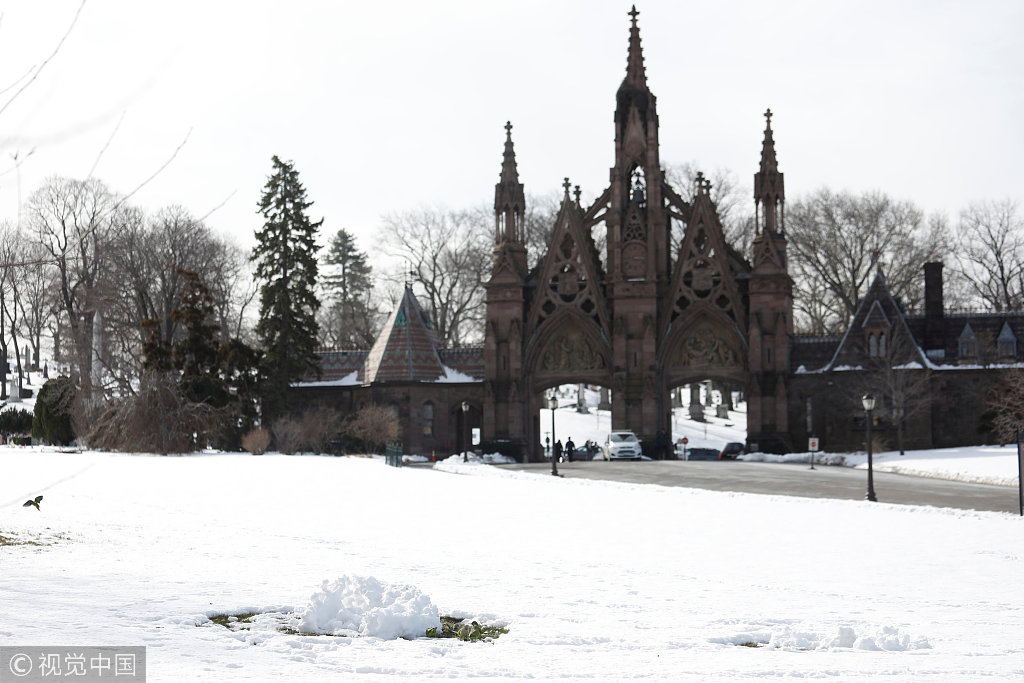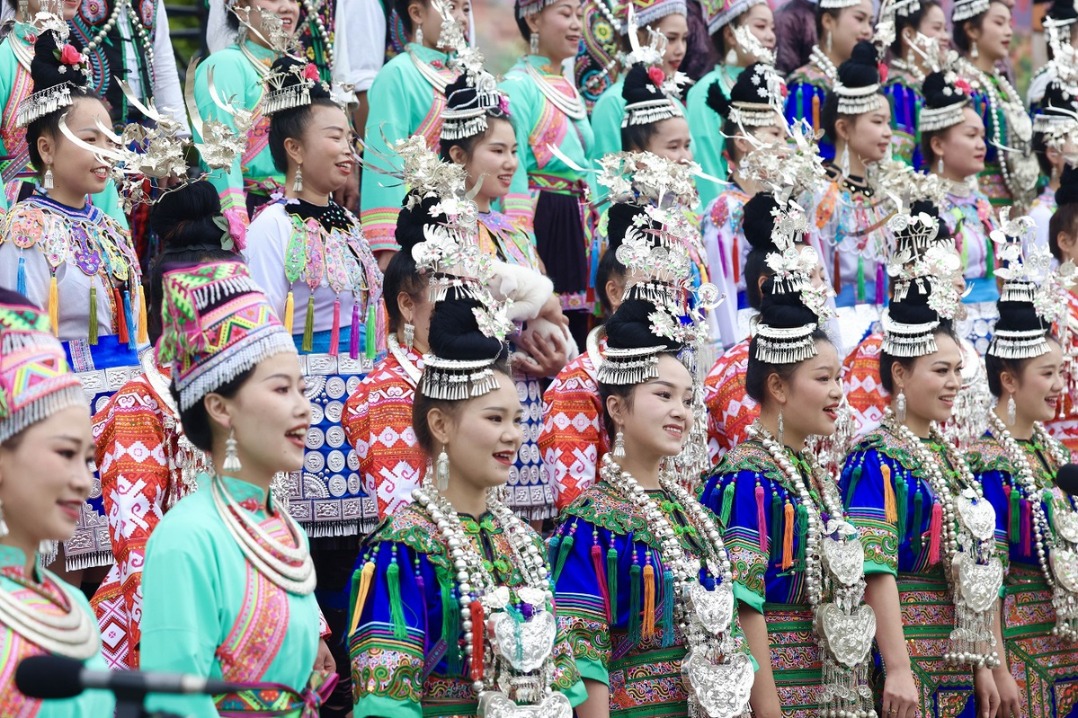Cemeteries worldwide are running out of space
By SCOTT REEVES in New York | China Daily Global | Updated: 2019-03-18 22:18

Few think of cemeteries as a land-use problem, but the aging baby boomers in the US and a growing world population have forced planners to rethink traditional burials and consider alternatives — especially in urban areas.
Running out of burial space will force a change of attitudes about how to best remember the dead, demand new techniques of disposing of bodies and may require changes in zoning laws.
"Solutions to the challenge of interring the dead are found in a handful of alternatives: natural burials, mausolea, columbaria, multi-use cemeteries and the reuse of existing burial sites," Carlton Basmajian, professor of community and regional planning at Iowa State University, and Christopher Coutts, professor at the Center for Demography and Population Health at Florida State University, said in a research paper that "the absolute number of Baby Boomer deaths in the coming decades stands to complicate how communities accommodate death and burial".
In the US, no one thought much about the problems created by traditional burial until it was realized that baby boomers — the 78.8 million people born between 1946 and 1964 — would approach average life expectancy between 2024 and 2042. If all of them were buried in traditional graves, it would require about 130 square miles (209 kilometers), or a city the size of Portland, Oregon.
In a continental nation with wide-open spaces, there was no need to take the long view because there was always more land in the 18th, 19th and early 20th centuries. Most cemeteries in the US are privately owned, and there are no national reporting standards or federal agency collating data.
Some burial grounds have become community space, such as Green-Wood Cemetery in Brooklyn, New York, noted for its ornate mausoleums, fancy headstones, pastoral setting and views of the Manhattan skyline. About 590,000 people are interred there.
"Green-Wood Cemetery has been running out of burial space for the last 20 years," Eric Barna, vice-president of operations, told China Daily. "We've extended gravesites by closing redundant roads and paths and converting them into gravesites, but we don't see any future expansion of gravesites.
"We've been selling smaller parcels,'' he said. "When the cemetery was founded (in 1838), 378 square feet was the standard plot. It could accommodate 30 to 50 caskets if stacked, and would serve a family for generations. Now, we sell 40-square-foot plots that can handle up to three caskets."
Each year, the cemetery attracts about 250,000 visitors in addition to those paying respects to family members. Some come for musical performances or movie screenings, others visit the graves of famous people, including composer and conductor Leonard Bernstein, newspaper editor Horace Greeley and William "Boss" Tweed, leader of the Tammany Hall group of corrupt New York politicians and bureaucrats in the late 1860s.
"Green-Wood is a natural green space — and that's tough to find when you live in the city," Barna said. The cemetery encompasses 478 acres (about 193 hectares).
Hart Island is at the opposite end of the scale. Its 131 acres (about 53 hectares) in Long Island Sound in the Bronx, is the final resting place for about 1 million New Yorkers who died without known relatives, whose bodies were unclaimed or whose families could not afford funeral services.
The island, site of a woman's asylum and a tuberculosis hospital in the 19th century and an Army missile site in the 20th century, is closed to the public and tended by volunteer inmates from the city's Department of Correction.
Five years before his death in 2013, former New York mayor Ed Koch paid $20,000 for a burial plot. He called it a "good investment" due to rising prices in Manhattan, where there is little additional space in existing cemeteries and no room for expansion.
Cemeteries became a land-use issue as the nation's population grew, because burial is essentially permanent use of the land. A cemetery can be seen as a nuisance when it seeks to expand, and there are often competing demands for use of the additional space, the Iowa State professors said.
Cremation appears to be part of the answer if the ashes of the deceased are scattered at sea or in fields set aside for that purpose. But many families place the ashes in an urn and inter them in a mausoleum, mitigating but not solving the need for more space at cemeteries.
"In terms of our funeral home, about 85 percent is now direct cremation," Peter Frisolone, owner of City Funeral Service, in Yonkers, New York, told China Daily. "The decision is driven by cost — not ecology. Direct cremation costs $1,500, while burial can run $8,000 or more. People phone around and compare prices like they were buying a refrigerator or a car."
But cremation is not without its drawbacks.
Natural gas typically fires a crematorium. The burning of bodies creates smoke and can release small amounts of mercury from melted dental fillings.
About 55 million people die each year in the world, increasing pressure on planners to find alternatives to traditional burial.
Some now opt for "green burials" or wrapping the deceased in a biodegradable shroud or casket made from cardboard or banana leaves prior to burial in a rural setting.
Designers at Columbia University in New York proposed a "Sylvan Constellation" or using the gas from decaying human remains to light lanterns that cast shifting patterns of light throughout the cemetery.
In 2016, the Xinhua News Agency said most cemeteries in Beijing were full. Many then bought burial plots in neighboring cities. About 80 percent of grave plots in nearby areas were sold to Beijing residents. Cremation is now encouraged in China, but many believe burial is the proper way to handle the body of a family member.
The government has promoted sea burials and tree burials, or planting a tree on the ashes of the deceased. In major cities, vertical burials or stacking smaller tombs have been tried. Family members are encouraged to share the same tomb.
In 2014, the Ministry of Civil Affairs said it hoped to achieve a cremation rate close to 100 percent by the end of 2020.
The lack of space in cemeteries is an acute problem in the United Kingdom. In 2013, the BBC reported that about 25 percent of England's local authorities responsible for the majority of cemeteries expected sites under their management to be full by 2023.
In London where land is expensive and grave sites scarce, a burial plot can cost as much as 19,940 pounds ($26,449).
If someone would like to be buried in the same cemetery as Hollywood stars such as Clark Gable, Carole Lombard and Humphrey Bogart at Forest Lawn Cemetery in Los Angeles, packages start at $15,740, including a $3,395 discount on caskets starting at about $8,000. The cemetery's website discretely notes that "memorial property is not included in our packages".
























